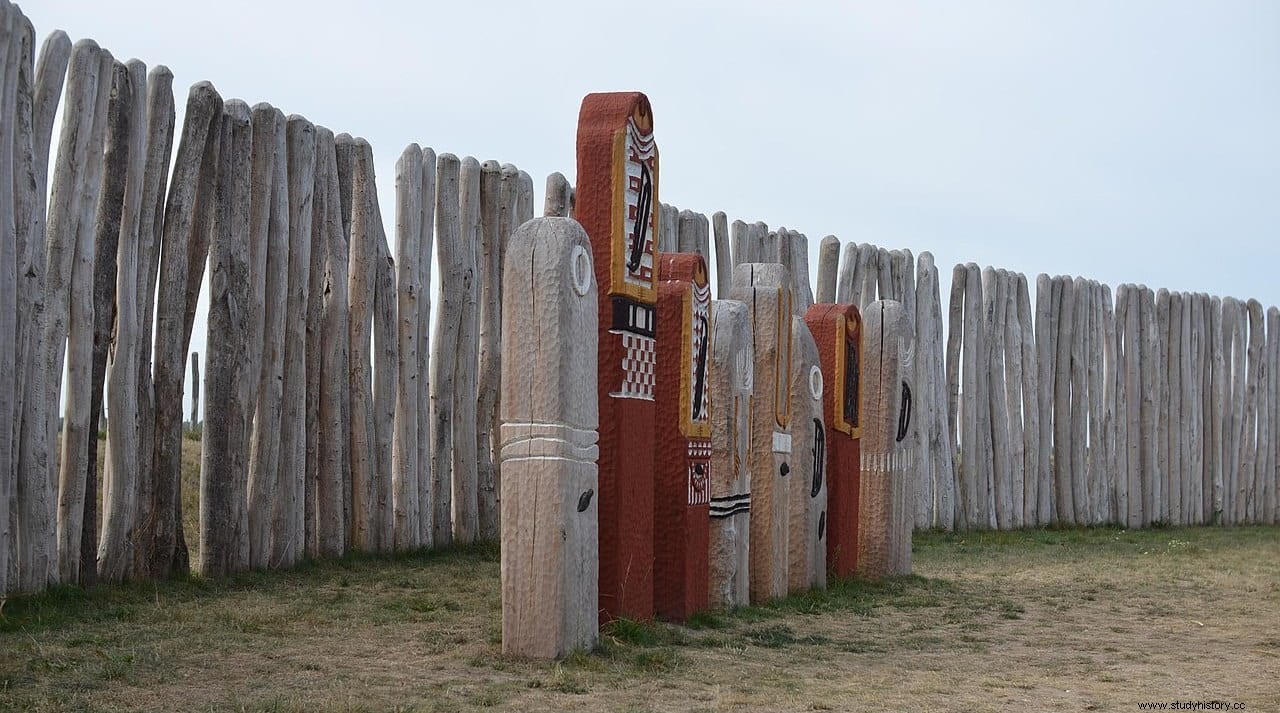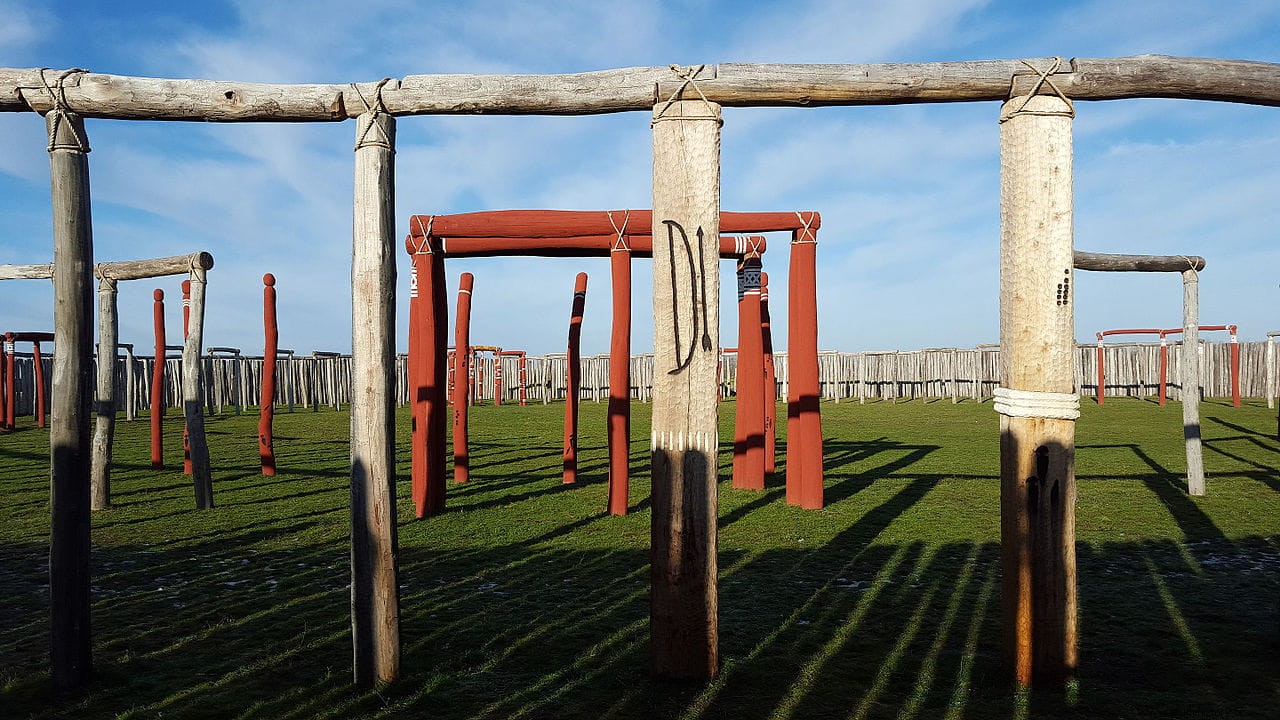Recently reconstructed, the so-called by comparison German Stonehenge opened its doors to the public in mid-2016. It is a circular sanctuary similar to the British type, but instead of stone it was built in wood at the end of the third millennium BC .
It was discovered in 1999 in Pömmelte, near the town of Barby, in the state of Saxony-Anhalt, and identified as a circular system of ritual graves, and excavations began in 2005.
Since 2015 it was given the name Ringheiligtum Pömmelte (Pömmelte Shrine Ring ). It is located next to a forest near the Elbe river.

The system has a diameter of about 115 meters and is composed of several parts:an outer ring partially surrounded by ditches, a moat, an inner palisade, several walls and wells in which ritual offerings, such as ceramic vessels, were deposited, dating from the transition period from the Neolithic to the Middle Ages. of the Bronze, between the XXIII and XXI centuries BC
Stone axes and animal and human bones were also found at the site, mainly of children and young women , whose injuries according to the researchers suggest an early end through sacrifice. And charred remains that indicate that fire played an important role in rituals.

It seems that the wooden structures were arranged in some way in relation to the position of the sun, which makes it very similar to Stonehenge and other English monuments such as Woodhenge and Durrington, built around the same time. In addition, carvings with cosmic symbols were found.
Archaeologists have determined that the sanctuary was destroyed sometime around 2050 BC. All the wooden posts that made up the structure were removed and burned. That would have ended hundreds of years of ritual human sacrifice.
Due to the use of wood, it has hardly been preserved, and what the public can currently see is a reconstruction that has cost more than 2 million euros.
